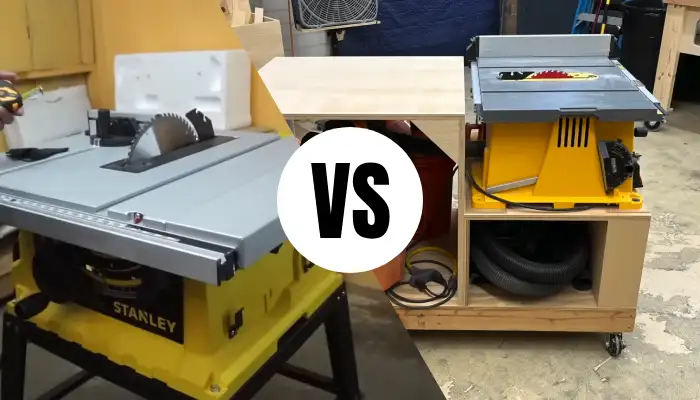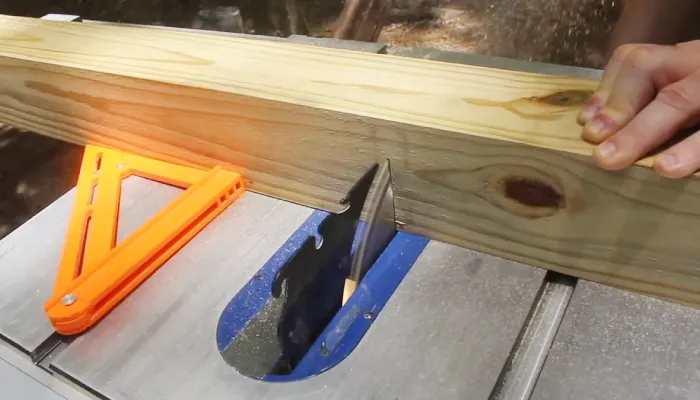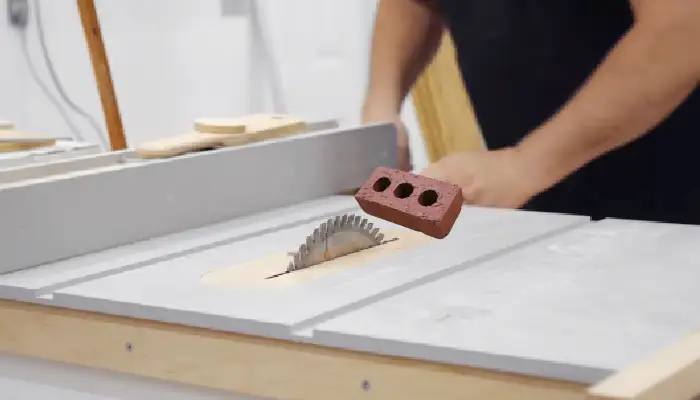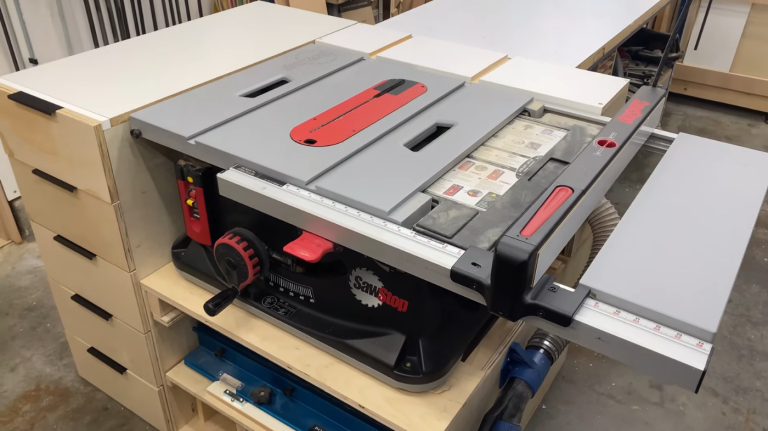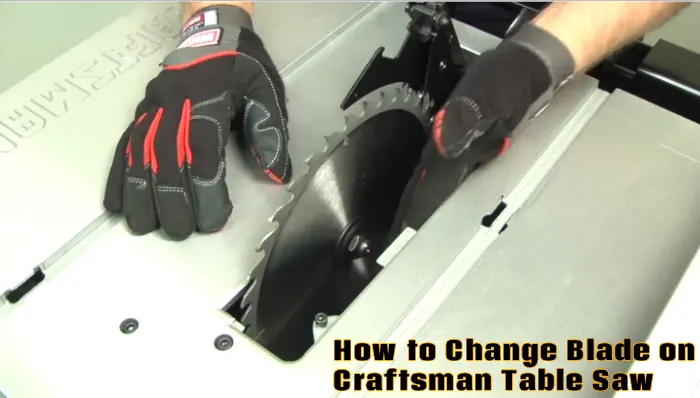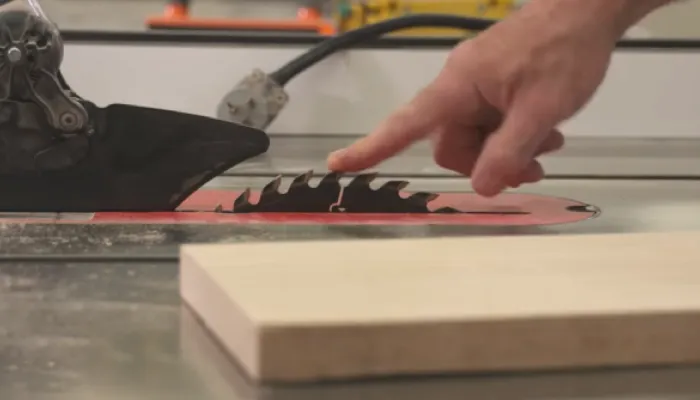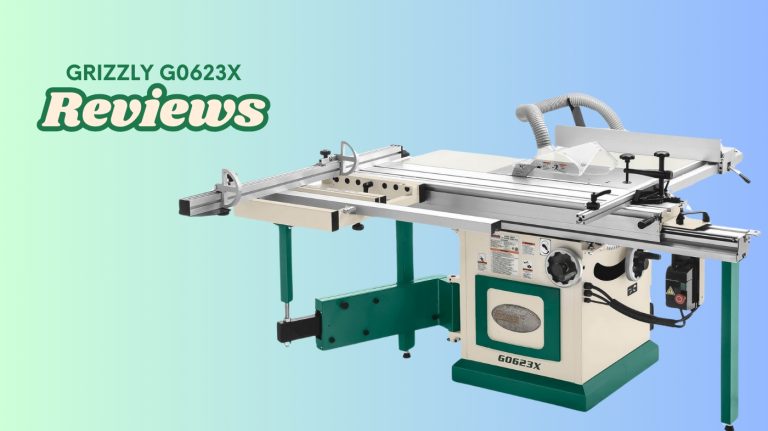10 Inch vs 12 Inch Table Saw: 8 Differences [Essential Know-How]
The size of the blade is one of the most important considerations when choosing a table saw. Two popular options in the market are the 10-inch and 12-inch table saws.
These saws offer different features and capabilities, each with its own set of advantages and limitations.
Table saws with 10-inch blades are generally lighter and more compact than those with 12-inch blades. You can move it around and store it easier, especially in small spaces.
Another significant difference lies in the voltage requirements. The 12-inch table saw typically operates on a higher voltage of 220 volts, while the 10-inch saw commonly runs on standard 110-volt power.
So, which one is the right choice for you? By understanding the disparities between the 10-in. and 12-in. table saws, you can make an informed choice based on portability, voltage availability, and workshop compatibility.
Let’s go deeper into the differences between these two saws and find out.
10 Inch vs 12 Inch Table Saw: In-Depth Differences
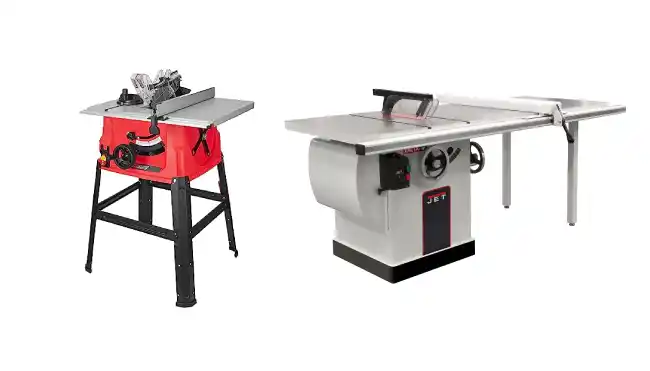
Table saws of 10 inches and 12 inches differ in the following ways:
1. Size and Weight
2. Voltage and Installation
3. Cutting Power
4. Stability and Comfort
5. Availability and Cost of Accessories
6. Durability and Switches
7. Cutting Smoothness
8. Blade Compatibility and Position
Let’s discuss this in more detail.
1. Size and Weight
The 10-inch saw is generally more compact and lighter, which makes it easier to transport and store. It’s ideal for individuals who only have a little space to work with or need to move their saw around frequently.
Conversely, the 12-inch saw is bulkier and heavier but can offer more stability during cutting. This saw is better suited for individuals with a dedicated workspace who don’t need to move their saw often.
2. Voltage and Installation
The 12-inch table saw needs 220 volts, which may necessitate professional electrical work to ensure the correct voltage.
Conversely, the 10-inch saw runs on standard 110-volt power, which means it can be plugged into a regular household outlet without any special installation requirements.
If you opt for the 12-inch saw, you might need to hire an electrician to ensure it receives the correct voltage. Meanwhile, the 10-inch saw is ready to use with a simple plug-in.
3. Cutting Power
With its ability to easily cut through thicker and more challenging materials, the 12-inch saw packs a powerful punch and is a cut above the rest.
The larger blade size allows for deeper cuts, making it perfect for cutting through large beams or thick wood slabs.
Also, the 12-inch saw is better suited to cutting laminated lumber, reducing chipping and splintering risks. If you’re working on a project that requires precision cuts, the 12-inch saw is the way to go.
With its powerful motor and bigger blade, you can cut through even tough materials, reducing kickback risks.
Contractors and DIYers alike will love the 12-inch saw’s ability to handle challenging materials. So, if you want a saw that can handle anything you throw at it, a 12-inch saw is the best choice.
4. Stability and Comfort
If you want to feel more stable and comfortable while cutting large workpieces, go for the 12-inch saw.
The larger table surface of the 12-inch saw provides better support and reduces the risk of tipping or instability during cutting. This is especially crucial when cutting large sheets of plywood or other heavy workpieces.
With the 12-inch saw, you can feel more confident in your cutting abilities and avoid the frustration and danger of an unstable saw.
On the other hand, the 10-inch saw may be more prone to tipping if too much weight is unbalanced on one side. This is due to its smaller size and limited table surface. While the 10-inch saw may work well for smaller projects, there may be better options for larger workpieces.
If you want to ensure stability and comfort during your cutting tasks, get a 12-inch saw. Its larger table surface and reduced risk of tipping will allow you to work more efficiently and with greater ease.
5. Availability and Cost of Accessories
Accessories and blades for the 12-inch saw may be harder to come by and costlier than those for the 10-inch saw, making it a potentially pricier investment.
This is because 10-inch blades and accessories are more commonly used in the woodworking industry and, therefore, more readily available and affordable. In contrast, 12-inch blades and accessories are less commonly used and, thus, may require more effort to find and purchase.
The larger size of the 12-inch saw may also contribute to the higher cost of accessories and blades. If you decide to invest in a 12-inch saw, you have to remember the potential difficulties of finding accessories and blades. However, there are ways to mitigate these challenges.
Here are a few tips to help you find the right accessories and blades for your 12-inch saw:
- Research and compare prices from multiple sources before making a purchase.
- Consider purchasing accessories and blades from the manufacturer of your saw to ensure compatibility.
- Join online forums or woodworking groups to ask for recommendations and advice from fellow woodworkers.
6. Durability and Switches
The sturdiness and robust switches of the 12-inch saw make it a reliable choice for heavy-duty woodworking tasks.
12-inch saws have larger, longer-lasting switches that can withstand the wear and tear of frequent use. This means that you can rely on the 12-inch saw to last longer and require less maintenance over time.
In contrast, the 10-inch saw may have smaller switches that may not be as durable in the long run. This can lead to more frequent repairs and replacements, which can be costly and time-consuming.
If you’re looking for a saw that can handle heavy-duty use and last for years to come, get the 12-inch model. Its durable switches and overall sturdiness make it a reliable choice for any woodworking project.
7. Cutting Smoothness
The 12-inch saw is particularly useful for cutting thicker pieces of wood, as it can easily handle the added pressure and size. A difference in cutting smoothness may not be noticeable to most woodworkers, especially in general woodworking.
You can still get clean cuts with the 10-inch saw. It ultimately comes down to personal preference and the type of woodworking tasks you’ll be undertaking.
If you frequently work with thicker pieces of wood or desire extra precision, the 12-inch saw may be worth the investment.
8. Blade Compatibility and Position
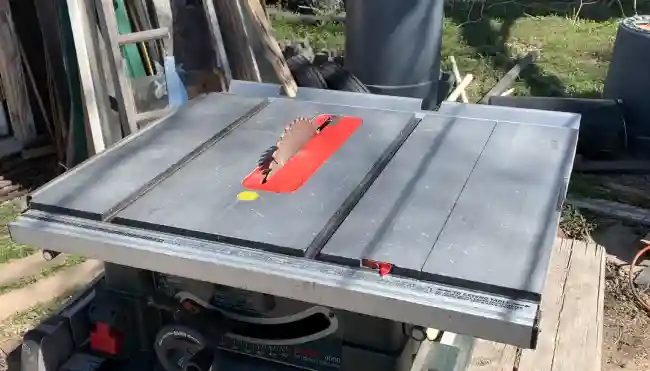
If you want to avoid frustration with incompatible blades and compromised cutting techniques, upgrading to a 12-inch saw will revolutionize your woodworking experience.
Using 10-inch blades on a 12-inch saw may require having them bored out to fit the larger arbor hole, which can be a hassle. On the other hand, blades specifically designed for a 10-inch saw may not directly work on a 12-inch saw, so you may have to buy new blades altogether.
Also, the blade position on the 12-inch saw is often farther back on the machine than the 10-inch saw, affecting certain cutting techniques and blade visibility.
With its larger blade and deeper cut, a 12-inch saw will give you more power and versatility in your woodworking projects. The blade position on a 12-inch saw also allows for more visibility, making it easier for you to see exactly where you’re cutting.
Quick Comparisons Chart of the 10 Inch Vs 12 Inch Table Saw
Here’s a comparison table highlighting the key differences between 10-inch and 12-inch table saws:
| Aspect | 10-Inch Table Saw | 12-Inch Table Saw |
| Size and Weight | Lighter and more compact, easier to move and store | Larger and heavier, offers more stability during cutting |
| Voltage and Installation | Operates on standard 110-volt power, no special installation required | Requires 220 volts, may need professional installation |
| Cutting Power | Capable of cutting most common materials, may struggle with thickness and hardness | More powerful, cuts through thicker and laminated lumber with ease |
| Stability and Comfort | Smaller size, may tip if weight is unbalanced | More stable, provides better support for cutting large workpieces |
| Accessories | Widely available and affordable | Blades and accessories may be harder to find and more expensive |
| Durability | Generally less durable switches | Larger and longer-lasting switches, built for heavy-duty use |
| Cutting Smoothness | May provide sufficient smoothness for most woodworking tasks | Potential for smoother cuts due to larger blade and added stability |
| Blade Compatibility | 10-inch blades may need to be bored out to fit larger arbor hole | Requires 12-inch blades designed for the saw |
| Blade Position | Blade position closer to the front of the machine | Blade position farther back, may affect cutting techniques and visibility |
Can a 10-inch table saw cut a 2×4?
A 10-inch table saw is capable of cutting through a 2×4. The term “2×4” refers to a common lumber size that actually measures approximately 1.5 inches by 3.5 inches.
It’s easy to cut through a 2×4 with a 10-inch table saw if you adjust the blade height and use the right fence.
You should note that the cutting capacity of a table saw may vary based on the specific model and its features. It is advisable to check the manufacturer’s guidelines and ensure that the table saw is properly set up and adjusted for the desired cut.
How deep can you cut with a 10-inch table saw?
A 10-inch table saw can make a maximum cut up to 3½ inches deep, allowing users to rip a 4×4 in half.
This depth is achieved by adjusting the blade height of the saw. It is important to note that this depth should not be exceeded as it may cause the saw to overheat or compromise the user’s safety.
Proper usage and care of the saw and adherence to safety protocols are crucial in ensuring efficient and effective cutting while maintaining a safe work environment.
Can you put a 12-inch blade on a 10-inch table saw?
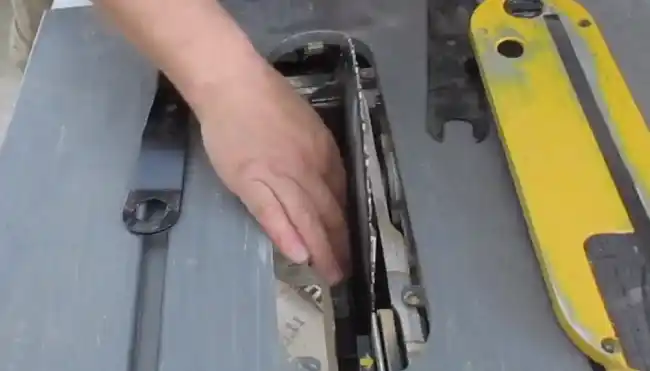
Putting a blade of 12 inches on a table saw of 10 inches is simply not possible. The reason is that the 10-inch table saw is designed to accept a blade with a maximum diameter of 10 inches only.
Attempting to use a larger blade could result in serious damage to both the blade and the table saw. You need to always use the correct size blade for the table saw to ensure safe and efficient operation.
Make the Right Choice Between a 10 Inch and a 12 Inch Table Saw
So, which one should you choose, a 10-inch or 12-inch table saw? After exploring the in-depth differences between the two, it really comes down to your personal needs.
If you’re a DIYer or a woodworker who mostly works on small to medium-sized projects, a 10-inch table saw would suffice. It’s more affordable, takes up less space, and can still make accurate cuts on various materials.
But if you’re a professional woodworker who deals with larger and thicker materials, the 12-inch table saw is the better option.
It has a larger blade, a more powerful motor, and can easily make deeper cuts. Just remember that a 12-inch table saw is more expensive and takes up more space, so make sure you have the budget and the room for it.
So, whether you’re making a simple DIY project or a complex woodworking masterpiece, always prioritize safety and precision to achieve the best results.

